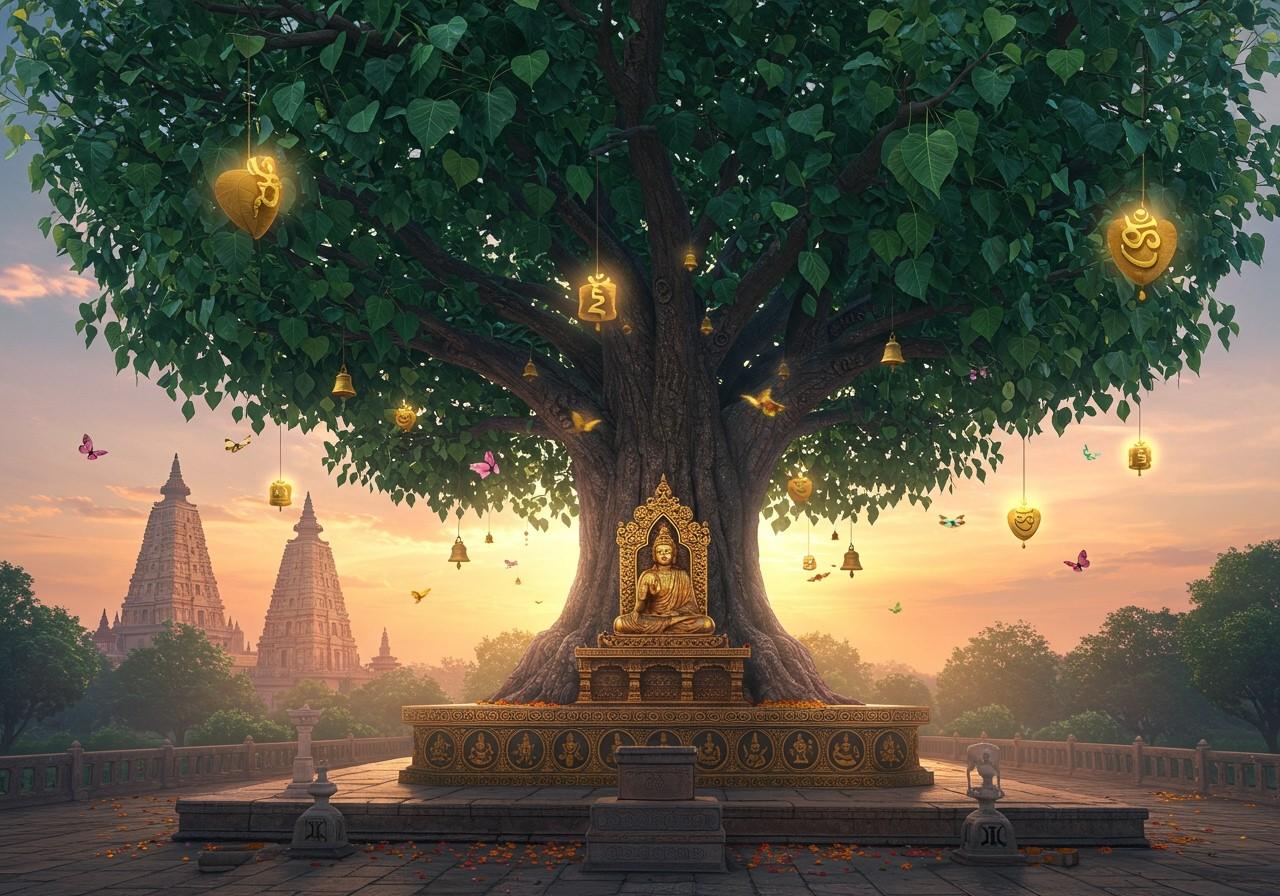
The Bodhi Tree, a sacred fig tree (Ficus religiosa), holds immense significance in Buddhism. Located in Bodh Gaya, Bihar, India, it is revered as the tree under which Siddhartha Gautama attained enlightenment and became the Buddha around 500 BCE. This blog post delves into the history, significance, and practical tips for visiting this revered site.
Historical Significance of the Bodhi Tree
The Bodhi Tree’s history is intertwined with the Buddha’s journey to enlightenment. The original tree, where Siddhartha Gautama meditated for 49 days, became a place of pilgrimage. Ancient texts and travelers’ accounts document its continuous veneration over centuries, highlighting its enduring importance to Buddhist tradition. King Ashoka, a fervent supporter of Buddhism, held the tree in high regard, propagating its saplings across his kingdom and beyond. The current Bodhi Tree is believed to be a descendant of the original, symbolizing the unbroken lineage of the Buddha’s teachings.
Significance in Buddhism
The Bodhi Tree embodies enlightenment, wisdom, and the path to Nirvana. It serves as a focal point for meditation and spiritual practice, representing the Buddha’s triumph over suffering. The tree plays a central role in Buddhist festivals, particularly Bodhi Day, which commemorates the Buddha’s enlightenment. Its image appears in Buddhist art and literature, further solidifying its place in the hearts and minds of practitioners worldwide.
Bodh Gaya: The Sacred Site
Bodh Gaya, home to the Bodhi Tree, is a UNESCO World Heritage Site and a major pilgrimage destination. The Mahabodhi Temple complex, an architectural marvel, houses the sacred tree. The Vajrasana, or Diamond Throne, located beneath the tree, marks the precise spot of the Buddha’s enlightenment. Bodh Gaya attracts pilgrims and visitors from all corners of the globe, drawn to its spiritual significance and rich cultural heritage.
The Bodhi Tree Today
Today, the Bodhi Tree is carefully preserved and protected. The surrounding area includes tranquil gardens and designated meditation spaces, fostering an atmosphere of peace and contemplation. Informative markers and plaques provide historical context for visitors. Modern technology is employed to monitor the tree’s health, ensuring its longevity for generations to come.
Visiting the Bodhi Tree: Tips and Guidance
Planning a visit to the Bodhi Tree requires some preparation. Here are some helpful tips:
- Best Time to Visit: The cooler months (October to March) offer the most pleasant weather for exploration.
- Getting There: Bodh Gaya is accessible by air, rail, and road from major Indian cities.
- Accommodation: A range of accommodation options caters to diverse budgets and preferences.
- Respectful Attire: Dress modestly and respectfully when visiting religious sites.
- Guided Tours: Consider engaging a local guide for deeper insights into the history and significance of the site.
- Personal Practices: You may wish to bring offerings or meditation materials for personal reflection.
Poojn.in can enhance your spiritual journey by providing authentic puja items and supplies related to the Bodhi Tree and Buddhist traditions. We offer:
- Incense and Dhoop: Enhance your meditation with our pure camphor tablets. Also, explore our diverse range of small candle packs and large candles perfect for creating a serene atmosphere.
- Meditation Supplies: Find comfortable meditation asanas (mats) made of pure cotton to support your practice. Deepen your connection with the Bodhi Tree through mindful meditation.
- Offerings and Ritual Items: Discover a variety of traditional offerings, including pure ghee for lamps and rituals. Browse our selection of sacred seeds and herbs symbolic of growth and prosperity, perfect for offerings at the Bodhi Tree.
Related Articles
- Vedas: Ancient Wisdom for Modern Life – Practical Applications
- Yoga & Ayurveda: A Holistic Wellbeing Approach
- Rudraksha and Tulsi: Sacred Hindu Symbols Explained
- Meditation and Mantras: Your Path to Inner Peace
Visiting the Bodhi Tree is a deeply enriching experience, connecting you to a timeless tradition of spiritual awakening. Plan your journey with reverence and respect, and let the wisdom of the Buddha inspire your path.


